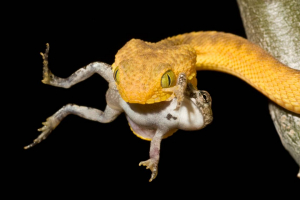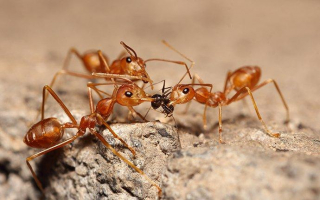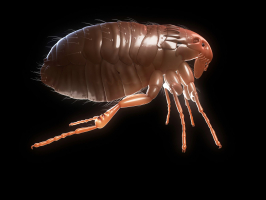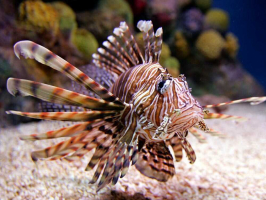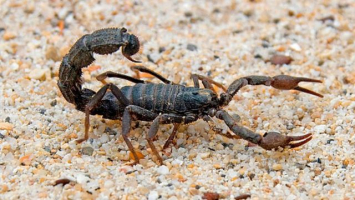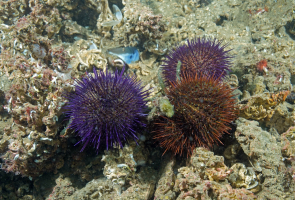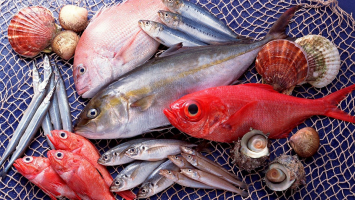Top 7 Predators of Jellyfish that Eat Jellyfish
Jellyfish, also known as sea jellies, are some of the most mesmerizing creatures you will ever see floating in the water. They come in hypnotizing colors and ... read more...can range in size from that of a pinhead to as large as a human being. While it is considered a delicacy in some countries, jellyfish is heralded as a staple food source for many other animals. Here are some predators of jellyfish that eat jellyfish.
-
One of the predators of jellyfish that eat jellyfish is the marine turtle, which can grow to a height of 6 to 9 feet. The sea turtle's hard shell is what allows it to successfully catch jellyfish. Most people cannot penetrate it, therefore the jellyfish cannot sting them as they normally do. In the eyes of sea jellies, the sea turtle appears unbeatable due to its protective shell and well-developed eyes.
While most sea turtles eat jellyfish, the leatherback sea turtle is by far the most fervent jellyfish predator. It might weigh anywhere from 200 to 750 kilos as the largest marine turtle. The leatherback sea turtle controls the jellyfish population because it favors sea jellies.
Six additional species besides the leatherback sea turtle may also feed on jellyfish. They are the green sea turtle, loggerhead sea turtle, flatback sea turtle, hawksbill sea turtle, hawksbill ridley, and olive ridley sea turtle. In fact, some species have evolved thick throat spikes that hold jellyfish in place. This is another factor contributing to the threat posed by plastic waste to these sensitive animals.
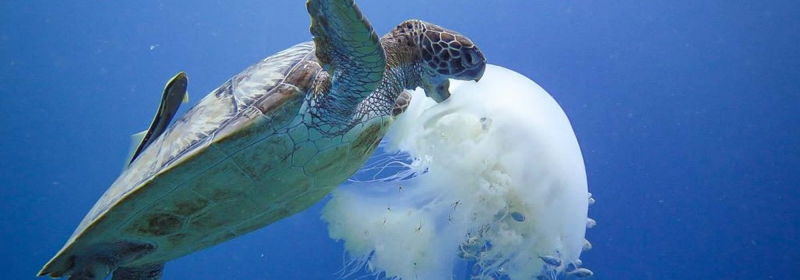
Photo: https://www.bigbluediving.com/the-turtles-on-koh-tao/ 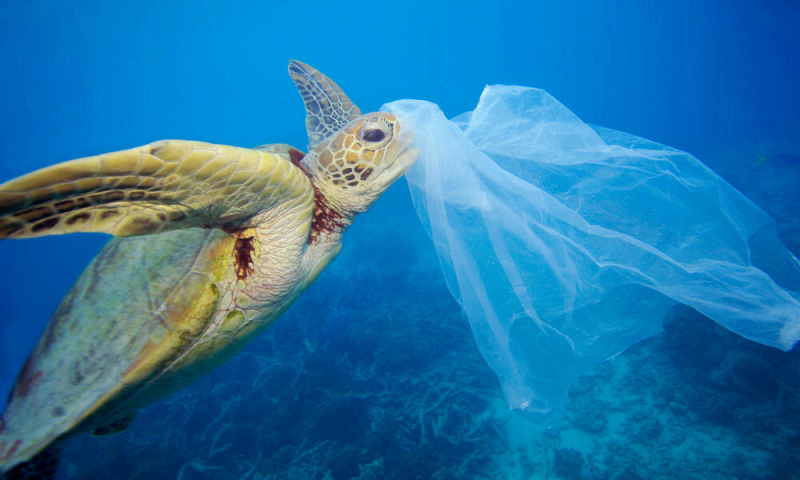
Photo: https://www.worldwildlife.org/stories/what-do-sea-turtles-eat-unfortunately-plastic-bags -
The ocean sunfish often called the common mola, is one of the world's largest bony fishes. It has a flat, gray, rough main body that is frequently seen in temperate and tropical regions. Many people mistake the ocean sunfish for a "fish head flanked by a tail" due to its shape. This bony fish is distinguished by its peculiar form. They are nearly flat and spherical, without the usual fishtail. Additionally, they have enormous fins on the back of their bodies.
The Mola Mola is known to consume a lot of jellyfish in its diet. A new study, however, reveals that they are a generalist predator with a wide range of foods. The jellyfish is one of the ocean sunfish's preferred meals, but it also eats fish, fish larvae, crabs, and squid. The majority of the ocean sunfish's predators can be repelled, but humans, who view this flatfish as an exotic delicacy, are immune to its attacks.
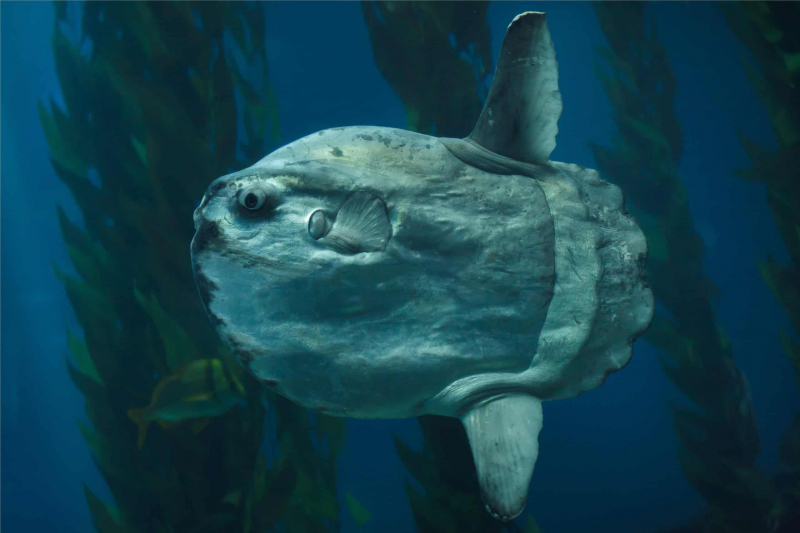
Photo: https://www.aquarium.co.za/blog/entry/everything-you-need-to-know-about-ocean-sunfish 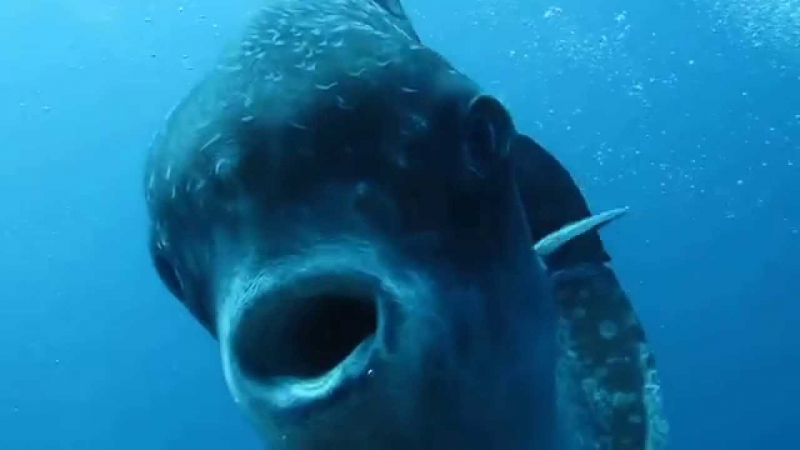
Photo: https://a-z-animals.com/blog/what-do-sunfish-eat/ -
One of the hardest aquatic predators, the shark, enjoys eating jellyfish as well. The great white shark, blue shark, tiger shark, hammerhead shark, mako shark, and thresher shark continue to be the most well-known species among the 500 that still cruise the oceans and seas.
The shark usually ambushes its unaware victim because it is at the top of the marine food chain. Unfortunately, this jellyfish predator can quickly and efficiently consume smaller jellyfish in one bite. The shark may, however, latch onto the sea jelly if it is one of the larger species and attempts to form a seal with its thick lips. It then rotates its body to rip apart the jellyfish's delicate shell.
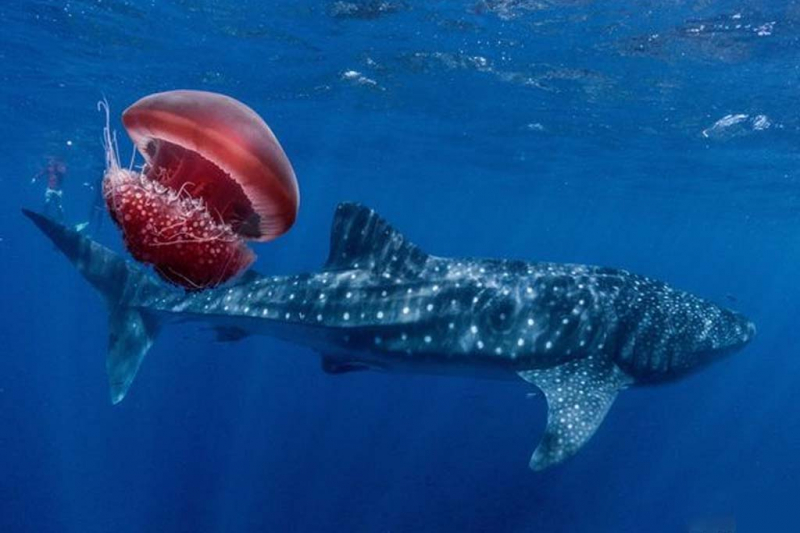
Photo: https://fishinghobby.org/do-sharks-eat-jellyfish/ 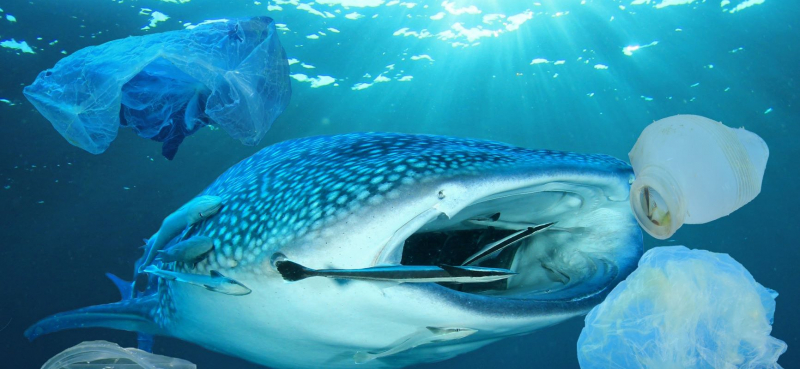
Photo: https://www.fanstory.com/displaystory.jsp?id=890024 -
The tuna is a saltwater fish with two dorsal fins on its back and is one of the predators of jellyfish that eat jellyfish. It is a sleek creature. There are just 15 different species of tuna fish in existence today. Despite the fact that this is true, the Bluefin, Albacore, Yellowfin, and Bigeye tuna fishes emerged as the most popular. Because of its swift swimming ability, tuna is a fearsome predator to many animals, including jellyfish.
Given that it can hunt from twilight till daylight, the bluefin tuna is arguably the jellyfish eater with the greatest fervor. Their flavor is coveted all around the world. Because of this, several species are either severely restricted or protected by governmental agencies around the world. They favor moderate to tropical climates in both the northern and southern hemispheres of all the world's waters. They eat mollusks, crabs, jellyfish, and smaller fish.
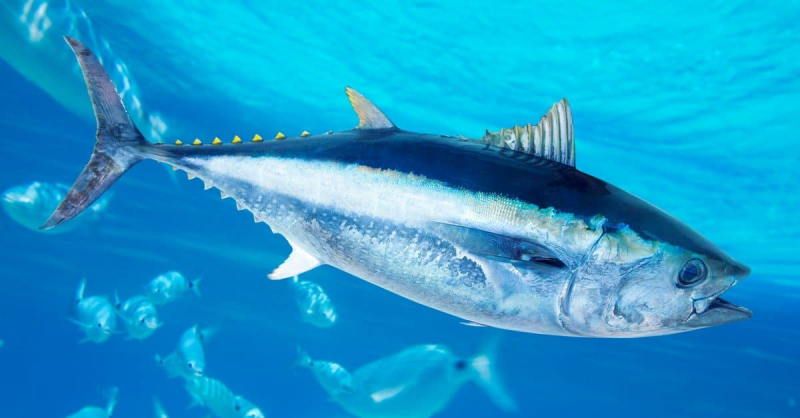
Photo: https://www.istockphoto.com/photos/big-eye-tuna 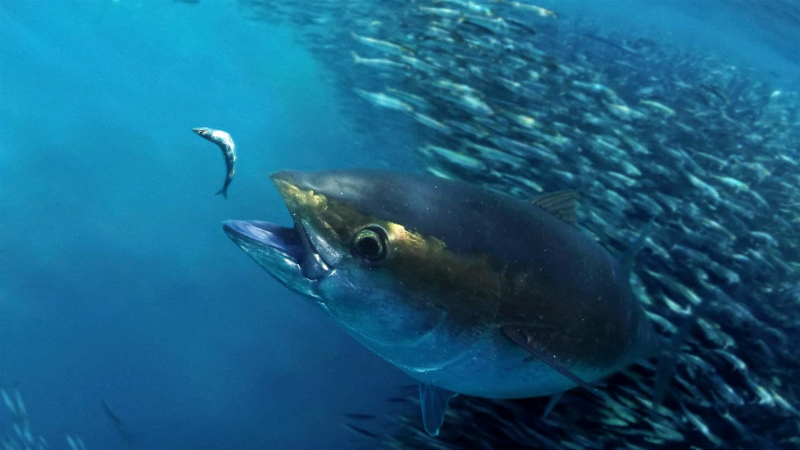
Photo: https://www.pewtrusts.org/en/research-and-analysis/issue-briefs/2018/07/the-story-of-atlantic-bigeye-tuna -
The huge swordfish is another fish with a distinctive appearance. These fish are found in tropical and temperate areas of the world's oceans. Their name comes from the long, saber-like protrusions on their snout. This migratory, carnivorous animal is also known as the broadbill, and it inhabits the temperate waters of the Atlantic and Pacific. It is renowned for being elusive and is a favorite sporting fish. It is renowned for its elongated body and pointed bill at the same time.
The adult swordfish, which can lose its scales and teeth, can grow to a length of 9.8 feet on average. It can, however, grow to a length of 14.9 feet and even weigh as much as 650 kg. They are among the swiftest and most agile swimmers, capable of speeds of up to 22 mph. According to scientists, they scratch and hurt their prey with their long, pointed "swords" to make them easier to trap.
Swordfish typically eat crustaceans, smaller fish, and rare jellyfish. According to experts, it's unlikely that they utilized their swords as spears. The swordfish can use its excellent agility and speed to capture a jellyfish (or other prey). The sea jelly gets injured by the jellyfish predator's sword-like bill, rendering it helpless to flee from its grasp. T At night, when they are more inclined to search the surface for food sources, swordfish frequently lurk.
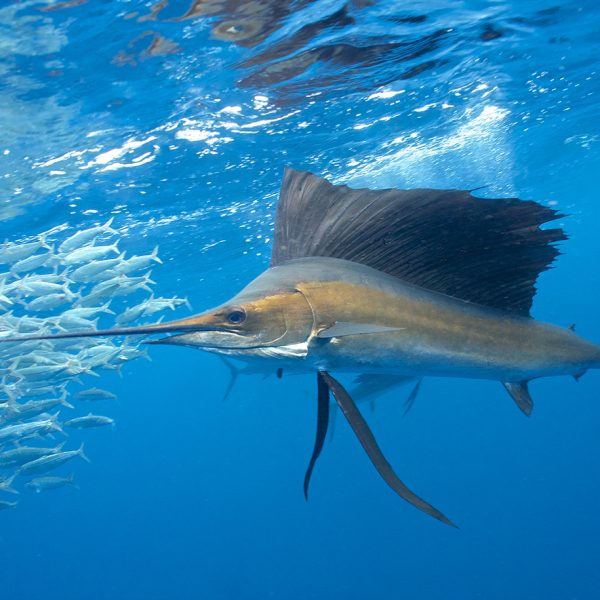
Photo: https://www.bluewatershots.com/image/I0000apjBEkq5Jt8 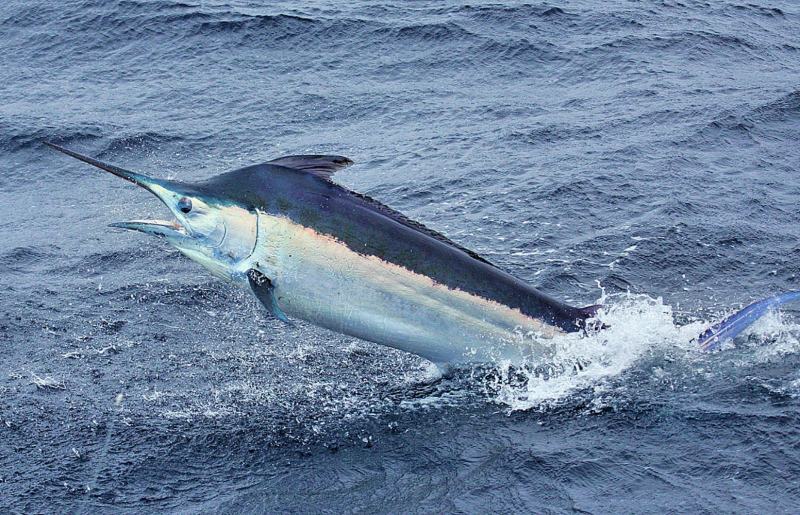
Photo:https://www.mgmghuru.in/peruse.aspx?cname=atlantic+white+marlin&cid=76 -
Despite their adorable appearance, penguins are actually one of the predators of jellyfish that eat jellyfish, krill, and other aquatic creatures' worst dread. The Southern Hemisphere is where penguins can frequently be found. One of the rare predators that actively hunt jellyfish is these cute marine birds. These flightless birds are masters of the sea, and they may be found in the Southern Hemisphere, mostly close to the polar zone. They are mostly located close to the polar zone in the southern hemisphere.
They can "fly" underwater thanks to their strong fins. They can hunt and flee from predators thanks to their excellent swimming agility. The Galapagos penguin, a particular species, can be found close to the equator. The white and black traits of the penguin are well-known. It also has flippers that resemble those of a bird and are frequently utilized for swimming. The Emperor penguin, which can grow to be a meter tall, is the largest variety.
The little blue penguin, which has the fitting moniker, is the smallest; it stands about 13 inches tall on average. The penguin lives underwater for half of its lifespan. Consequently, as it swims to its favorite area, it captures its prey. To the amazement of researchers, a recent study found that they devour large amounts of jellyfish. Why this is the case is still a mystery to scientists.

Photo: https://explorationsquared.com/things-penguins-eat-and-things-they-dont/ 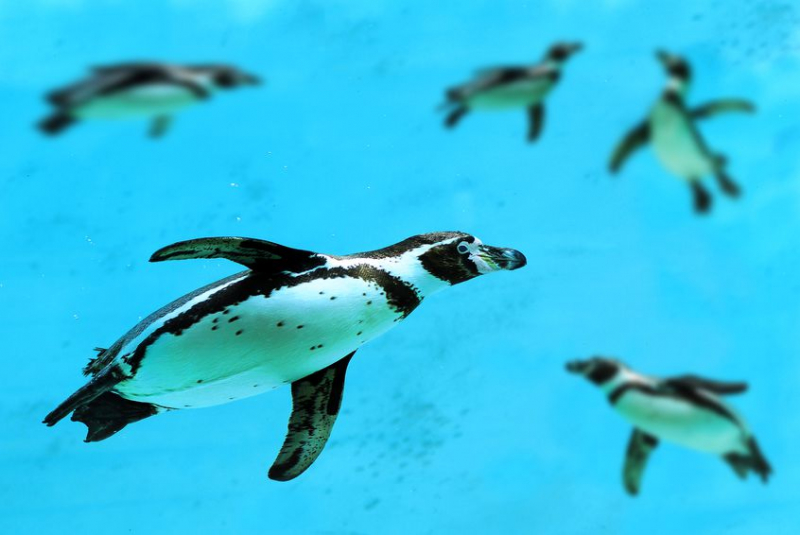
Photo: https://explorationsquared.com/things-penguins-eat-and-things-they-dont/ -
Yes, some larger jellyfish will consume smaller jellyfish. The smaller jellyfish frequently end up as food for their larger, umbrella-shaped coworkers. In the world, there are more than 2000 species of jellyfish. They don't have particular tastes, so they'll eat another jellyfish if they find one.
The prey of jellyfish is not pursued or ambushed. For this sort of action, they are brainless. Similar to how they gorge on their other food sources, the jellyfish devour their fellow sea jellies. They act as a kind of trip line with their extended tentacles. When a smaller jellyfish enters the aforementioned "line," the predator releases its nematocysts, which paralyze or even kill the captured creature. In order to get the meal into its mouth, it then flexes its tentacles.
The jellyfish can grab more prey because of its swimming style. Instead, they capture prey when it makes contact with their stingers while eating. These stingers immobilize the animal, which facilitates easier digestion. It absorbs more water and the marine life that comes with it as its bell-shaped head grows. It starts using predatory behavior once the food source is within reach.
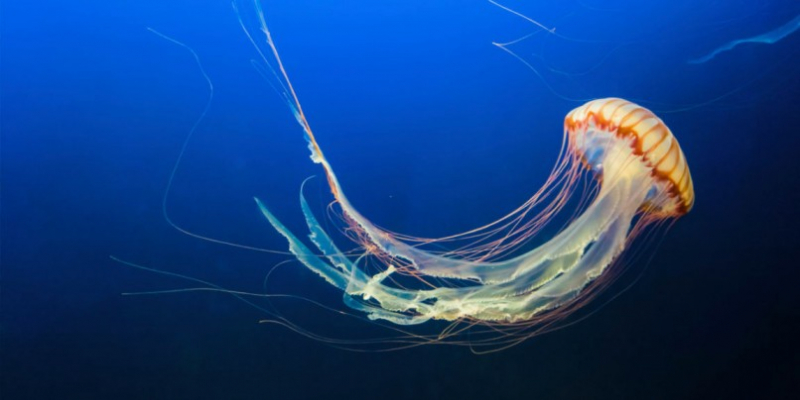
Photo: https://animals.howstuffworks.com/marine-life/jellyfish.htm 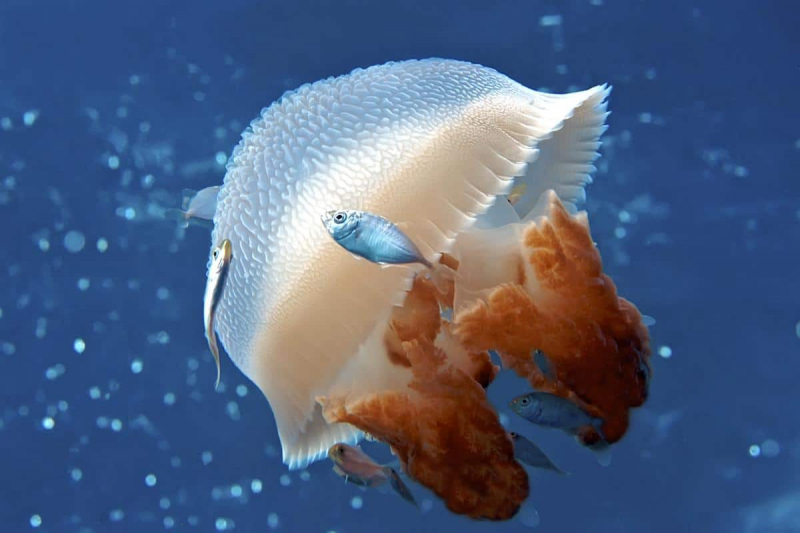
Photo: https://thexplorion.com/what-do-jellyfish-eat/









